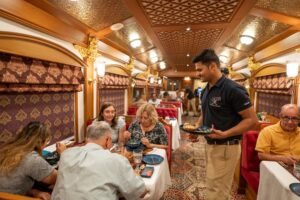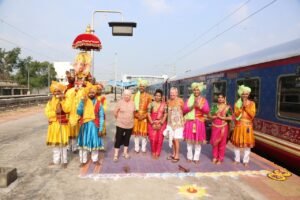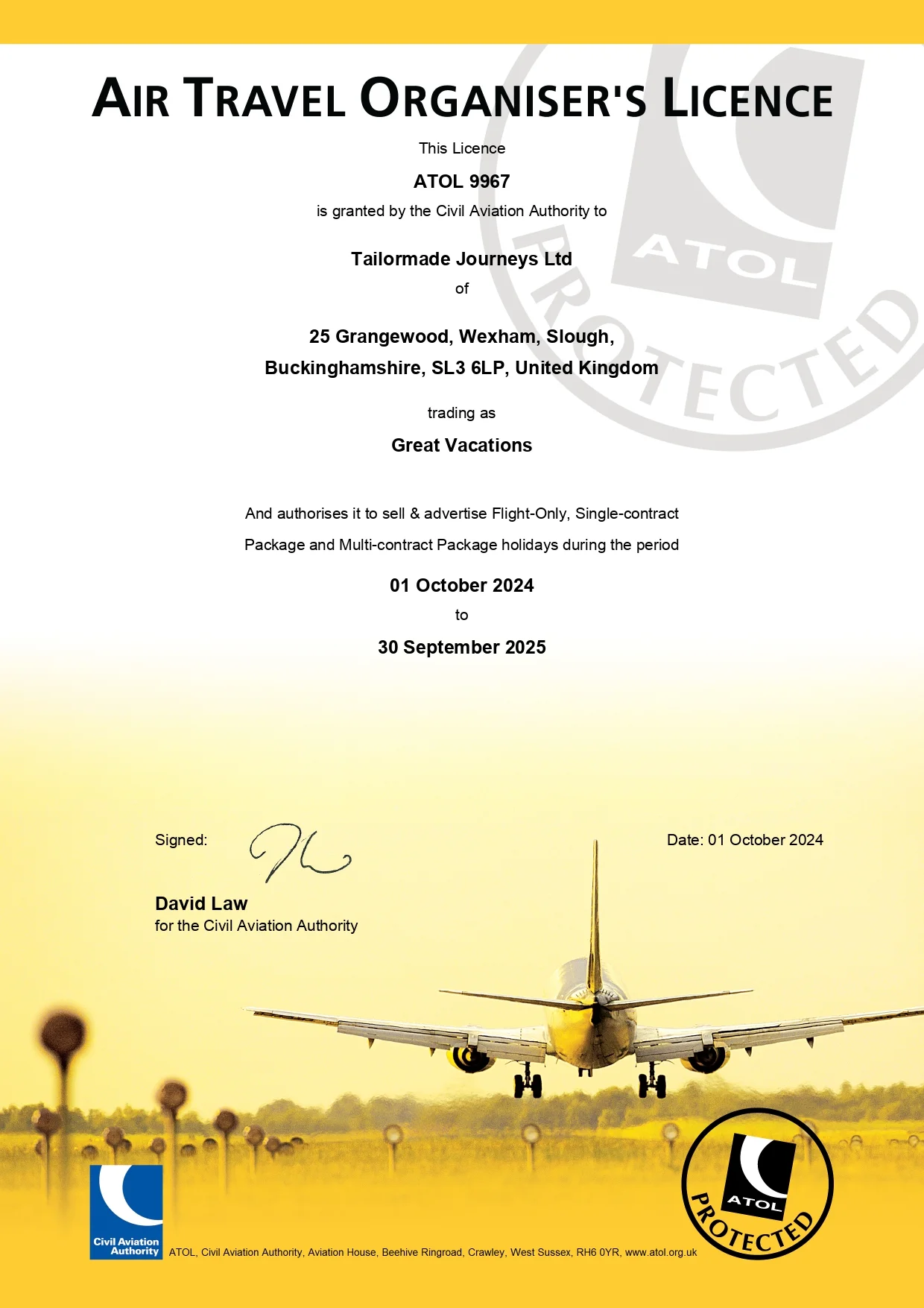Taking Indian Luxury Trains: What You Actually Need to Know
India gets under your skin. Always has, always will. The problem is, most people arrive expecting chaos and leave feeling like they barely scratched the surface. Between navigating crowded stations, hunting for decent hotels, and constantly moving your luggage around, you spend more time dealing with logistics than actually seeing the country.
The Deccan Odyssey is probably the best known of these trains, and for good reason. It’s not trying to be the Orient Express or some European idea of luxury.
What Makes These Trains Different?
Your cabin isn’t cramped like regular train compartments. There’s space to actually relax, windows that give you proper views, and bathrooms that work consistently. The beds are comfortable enough that you’ll actually sleep well, which matters more than you’d think when you’re trying to enjoy your vacation.
The dining situation alone makes it worthwhile. Instead of wondering where your next good meal is coming from, chefs prepare different regional cuisines based on where you’re traveling through. You’ll taste dishes from Maharashtra when you’re in Maharashtra, Rajasthani food when you’re in Rajasthan – cooked properly, not tourist versions.
What surprised most people is how the service works. It’s not stuffy or formal like some luxury hotels where you feel like you can’t touch anything. The staff genuinely care about making sure you’re comfortable, and they remember things. Your preferred morning drink, whether you like your room warmer or cooler, what time you usually wake up.
The Deccan Odyssey Specifically
They call it the “Blue Limousine on Rails,” which sounds like marketing speak but actually makes sense when you see it.
This train has 21 cars, and they use 12 just for passenger rooms. That’s a lot of space per person, which means you’re not constantly bumping into other travelers or waiting in lines for facilities.
The rooms work like small hotel suites. Enough space to spread out your things, store your luggage properly, and have somewhere to sit that isn’t your bed. The windows are large enough to actually enjoy the scenery, and they’re positioned so you can watch the landscape change while you’re eating or relaxing.
Food gets serious attention here. The chefs don’t just reheat prepared meals – they’re actually cooking based on what’s available locally and what fits the region you’re traveling through. Some of the best Indian food you’ll have comes from these train kitchens, partly because they can source ingredients from local markets along the route.
They’ve got a spa car with treatments that make sense for train travel – things that help you relax and adjust to the rhythm of rail travel rather than trying to recreate a resort spa experience. There’s also a gym if you need to work out, and lounge areas where people naturally gather in the evenings.
The staff-to-passenger ratio is higher than most hotels. This means someone’s always available when you need something, but they’re not hovering or making you feel watched.
Where These Trains Actually Go
The routes matter more than the train itself, honestly. These aren’t random trips – they’re planned to show you different aspects of India that most tourists never see.
The Delhi to Mumbai Route
This one covers the greatest hits but does it right. You start in Delhi, which can be overwhelming if you’re staying in the city center, but manageable when you have the train as your base. Jaipur gets proper time – not just a rushed day trip where you see one palace and leave.
Ranthambore National Park is where you might see tigers, though they don’t guarantee it because that’s not how wildlife works. What they do guarantee is that you’ll have better chances than most tourists because the guides know the park well and you’re not rushing to catch an afternoon flight.
The Taj Mahal stop in Agra gives you time to actually appreciate it. Most people see it for an hour or two and move on. Here, you can go back at different times of day when the light changes how it looks.
The Maharashtra Route
This focuses on western India, including places most people have never heard of. Aurangabad puts you near the Ellora and Ajanta caves, which are incredible if you care about ancient art and history. These aren’t quick photo stops – you spend real time understanding what you’re looking at.
Nashik surprised everyone by being a legitimate wine region. Indian wine used to be a joke, but some of these vineyards are producing bottles that hold up against international competition. The tastings aren’t just tourist activities – they’re serious wine education.
Goa at the end provides beach time, but not the crowded party beaches most tourists see. You get access to quieter areas where you can actually relax after days of cultural immersion.
The Deccan Plateau Route
This goes to places like Hampi and Bijapur that hardcore history enthusiasts love but regular tourists skip. Hampi is the ruins of what was once one of the world’s largest cities. Walking through it feels like discovering a lost civilization, partly because you’re not fighting crowds to see anything.
The guides on these routes make the difference. They’re not reading from scripts – they know these places because they’re from these regions. They’ll show you details and tell you stories that you’d never get from a guidebook.
Why This Approach Works
Most India trips are exhausting, even when they’re amazing. You’re constantly making decisions, figuring out transportation, dealing with different hotel standards, and managing logistics. By the time you get home, you need a vacation from your vacation.
Luxury train travel eliminates that exhaustion. Everything’s handled, so you can focus on actually experiencing India rather than managing your trip. You engage fully with each destination during the day, then return to consistent comfort each evening.
The social aspect matters too. You’ll meet other travelers, but in a relaxed setting where conversations happen naturally. Some of the best parts of these trips are the evening discussions with fellow passengers who’ve had similar experiences that day.
Most importantly, this approach lets India reveal itself gradually. Instead of jumping between disconnected destinations, you see how the landscape and culture shift as you move through different regions. That continuity helps you understand India as a whole rather than just collecting individual experiences.
These trains aren’t cheap, but when you factor in what you’d spend on flights, hotels, meals, guides, and transportation for a comparable trip, the price difference isn’t as dramatic as it first appears. And the experience is genuinely different – not just more comfortable, but more complete.
 Toll-Free 1-855-952-6526
Toll-Free 1-855-952-6526 +44 1753 201 201
+44 1753 201 201  61-2-86078986
61-2-86078986  + 44 ( 0 ) 7739 716978
+ 44 ( 0 ) 7739 716978 











